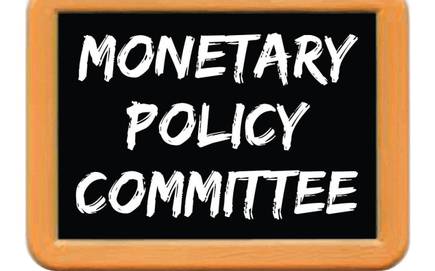Monetary Policy Committee
2020 APR 18
Mains >
Economic Development > Indian Economy and issues > Banking sector

WHY IN NEWS?
India’s central bank is reviewing the framework behind Monetary Policy Committee (MPC) and its decision-making as pressure builds on authorities to do more to revive a slowing economy.
MONETARY POLICY COMMITTEE (MPC)
- Monetary Policy Committee (MPC) is a committee of the Reserve Bank of India headed by its Governor which is entrusted with the task of fixing the benchmark policy interest rate (repo rate) to contain inflation within the specified target level.
- The Reserve Bank of India and Government of India signed the Monetary Policy Framework Agreement on 20 February 2015.
- Subsequently, the government while unveiling the Union Budget for 2016-17 in the Parliament proposed to amend the Reserve Bank of India (RBI) Act, 1934 for giving a statutory backing to the Monetary Policy Framework Agreement and for setting up a Monetary Policy Committee (MPC).
- The MPC replaced the system where the RBI governor with the aid and advice of his internal team and a Technical Advisory Committee (TAC) had complete control over monetary policy decisions.
- Primary Objectives of the MPC are:
- Maintain price stability
- Keeping up with the objective of growth
- Meet the challenge of an increasingly complex economy
CONSTITUTION OF MPC
- MPC has six members –
- RBI Governor (Chairperson)
- RBI Deputy Governor in charge of monetary policy
- One official nominated by the RBI Board
- Three members representing the Government of India.
- These Government of India nominees are appointed by the Central Government based on the recommendations of a search-cum-selection committee consisting of the cabinet secretary (Chairperson), the RBI Governor, the secretary of the Department of Economic Affairs, Ministry of Finance, and three experts in the field of economics or banking as nominated by the central government.
- The three central government nominees hold office for a period of four years and will not be eligible for re-appointment.
- These three central government nominees in MPC are mandated to be persons of ability, integrity and standing, having knowledge and experience in the field of economics or banking or finance or monetary policy.
DECISION-MAKING
- The MPC takes decisions based on majority vote (by those who are present and voting).
- In case of a tie, the RBI governor will have the second or casting vote.
- The decision of the Committee would be binding on the RBI.
FUNCTIONS OF MPC
- MPC decides the changes to be made to the policy rate (repo rate) so as to contain the inflation within the target level specified to it by the Central Government.
- Each Member of the Monetary Policy Committee has to write a statement specifying the reasons for voting in favour of, or against the proposed resolution.
- RBI has to publish a document explaining the steps to be taken by it to implement the decisions of the Monetary Policy Committee including any changes.
- The framework mandates the RBI to aim to keep consumer price inflation at 4%, while allowing the rate to fluctuate in a 2%-to-6% band.
- The Central Government determines the inflation target in terms of the Consumer Price Index (CPI) once in every five years in consultation with the RBI.
- In case of failure to meet targets RBI gives reasons for failure, remedial actions as well as estimated time within which the inflation target shall be achieved.
- Further, RBI is mandated to publish a Monetary Policy Report every six months explaining the sources of inflation and the forecasts of inflation for the coming period of six to eighteen months.
IS IT THE BEST PRACTICE?
- The MPC has been welcomed as imparting transparency and accountability to monetary policy making. The idea that such power or responsibility does not reside in a single person but more broadly shared has strong moral appeal.
- This system of framing monetary policy is seen in most of the world's central banks:
- The US Federal Reserve sets its benchmark fund rate through the Federal Open Market Committee (FOMC).
- The Bank of England also has an MPC to decide the official interest rate in the United Kingdom.
- This system is more suited for emerging markets like India where structural factors distort interpretation and analyses unlike advanced countries where structural problems are absent, markets are well-integrated and there are few diversities and divergences.
- Thus, having a system which allows for collective decision making and analysis, with members from outside the institutional structure of Central Bank is practical and effective.
CONCLUSION
- Spatial fragmentation in market structures and institutions is large in country like India, numerous rigidities affect price adjustments and monetary policy transmission. Thus multiple interpretations influencing the monetary policy considerations is better, with RBI Governor having the final say in case of a tie.
Practice Question
Q. The Reserve Bank of India (RBI) has recently started reviewing the framework behind Monetary Policy Committee (MPC). What do you understand by monetary policy? Evaluate the efficacy of Monetary Policy Committee as an effective system of framing policy.
